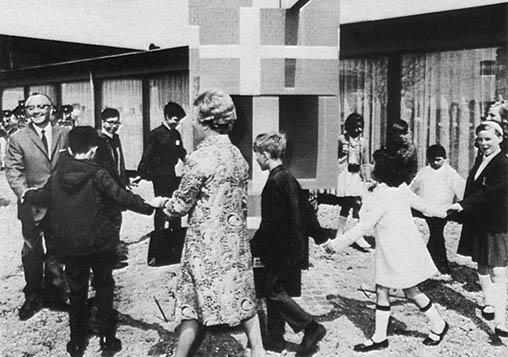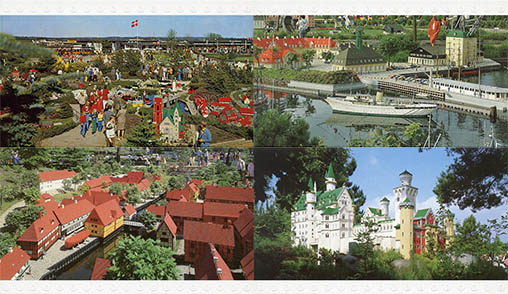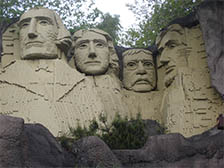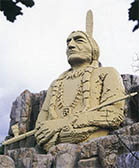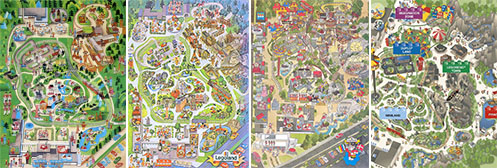Legoland
There’s a lot more Legoland history which will be covered later. Most of this material was taken from my article “Building Legoland” in Brick Journal, issue 5. The promotional models created by Dagny Holm and her model shop were becoming larger, more complex and more realistic. Although the models were intended for store displays and trade shows, they became so popular that it was becoming increasingly difficult for Lego to keep up with requests to visit the factory. The number of visitors, almost 20,000 per year by the mid 1960’s, so annoyed Godtfred that he decided to set up an outdoor display to get these visitors out of his factory. From an early 1980’s interview:
1. Hansen, Willy Horn. 50 Years of Play. Trans. Charles Napier. Billund: Lego System A/S, 1982. “What I had in mind first was something in the way of a large open-air show, maybe the size of a football field, where a pensioner couple could sell tickets and perhaps run a small cafeteria. But when we eventually, in the mid 1960’s, got down to putting our ideas on paper the plan and our ambitions had grown. But just about everybody shook their heads — it was a utopian notion to think that you could set up tourist attraction in the middle of the bleak Jutland moors, where people had no desire to come. But I've inherited a good chunk of my father’s obstinacy.” 1
As the scope of Godtfred’s project expanded it became clear that he needed someone to manage the project and found that person in Arnold Boutroup. At the time Boutroup was the chief designer for the Anva Department Store in Copenhagen. He was heavily influenced by the post-war modernist movement of Danish art and design and by the mid-1950’s he was creating ground-breaking displays at Anva; displays that caught the attention of not only Copenhagen’s shoppers, but Godtfred as well. Godtfred finally managed to lure Boutroup from Copenhagen to Billund by offering him the position of the General Director.
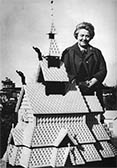
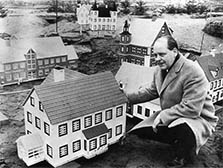
Dagny and Arnold pose in the uncompleted Miniland, 1968
The Madurodam
The ideas for a theme park in Billund came, no doubt, from the Tivoli Gardens in Copenhagen, and perhaps by Disneyland in Aneheim, which had revolutionized the theme park just a decade earlier.2 2. Denmark does have some experience with amusement parks: the two oldest in the world are both located there. Dyrehavsbakken, in Klampenborg, was established in 1583 and Tivoli Gardens in 1843. Tivoli Gardens served as the inspiration of not only Legoland, but also of Disneyland. But the true inspiration came after Godtfred visited the Madurodam in the Hague.
The Madurodam, which opened in 1952 as both a war memorial and charitable organization, is a park with exact 1:25 scale replicas of many Dutch buildings set among a perfectly scaled landscape – an entire miniature city:

Madurodam, from a postcard, 1958
Godtfred and Arnold decided that this would be the perfect format for their park. Rather than simply showcasing promotional models they would build scale models of real structures placed in their proper context. A large scale, cohesive design would be the perfect showcase for the model builders and the focal point for an attraction that could appeal to more than just local families or school groups. The result would become Miniland, the centerpiece of Legoland.
Dagny and the model shop, working from photographs, drawings, plans, and even site visits, began recreating the many of the structures of Europe out of ordinary Lego elements in 1:20 scale. They built a Dutch town, a Swedish fishing village, and, of course, many famous Danish landmarks. By the time the park opened they had built several hundred structures using almost six million bricks.
Groundbreaking on the site was in 1966. They chose a 13,000 m2 (three acre) heath sandwiched between the factory and airport in Billund. The terracing of Miniland required several thousand truckloads of soil, which had to be brought in from surrounding areas. Over the next year and a half they built a complete amusement park on the site. By the time construction was finished in 1968 the park consisted of:
- — Miniland, the centerpiece and focus of the park
- — The Legoland Driving School
- — The Lego Train
- — A Children's puppet theater
- — Fort Legoredo. An Indian encampment
- — An Antique doll collection
- — A Lego Building area
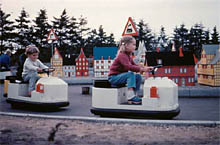
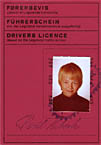
Legoland Driving School, 1970, and the official drivers license, 1971
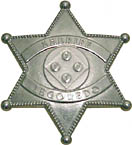
Legoredo sheriff’s badge, 1978
Opening Day
Legoland opened to the public on Friday, 7 June and drew 3000 visitors on the opening day. It was an overwhelming success. As Godtfed recounts:
3. Hansen, Willy Horn. 50 Years of Play. Trans. Charles Napier. Billund: Lego System A/S, 1982. “During the few months the season lasted we had no fewer than 625,000 paying visitors. It knocked all of our planning to the moon: at most we expected only half that figure.” 3
The first visitors were Danish families, no doubt spurred on by pre-opening publicity from both local newspapers and family-oriented media. The Danish magazine Familie Journalen even called the opening “the most important event for families of the year.” Over time the park started to attract families from Northern Europe, and later, visitors from all over the world.
The Richter Commissions
By 1970 the park had expanded to nearly eight times its original size and Godtfred began to envision much larger Lego models not limited by the scale of Miniland. He choose the Danish artist Bjørn Richter to create a series of large scale sculptures.
Richter, who had traveled to the American West and became deeply interested in the history and culture of the American Indian, began a series of three commissions for the park. His first, a massive replica of Mt. Rushmore, was installed in 1974 and required 1.4 million Lego bricks and more than 40,000 Duplo bricks. He followed this with two completely original sculptures; the massive and remarkably realistic Great Bison Hunt relief and the Chief Sitting Bull monument.
Richter spent more than two years in his studio designing and building the stunning monument to the Lakota Sioux Chief. When it was finally installed in the park it stood 36 feet tall and required more than 1.75 million bricks. Some 30 years later it remains the largest Sitting Bull monument in the world and is still perhaps the most impressive sculpture in Legoland.
Titania‘s Palace
For years the Kirk Christiansens had been quietly amassing one of the worlds most important collections of antique dolls and mechanical toys. They purchased the famous doll collection of Estrid Faurholt, a Copenhagen collector, in the early 1970’s and bought Titanias Palace from a Christies auction in 1978 for 200, 000 USD.
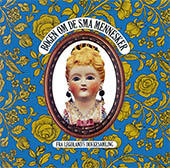
Doll collection guidebook, 1977
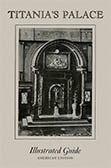
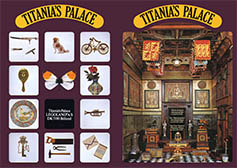
Titanias Palace guidebooks, 1926 and 1980
Titanias Palace was built in Dublin by Major Sir Nevile Wilkinson for his daughter Gwendolyn. It took 15 years to complete and was opened by Queen Mary in 1922. The 18 room dollhouse contained more than 3000 miniatures and was exhibited around the world. After Lego acquired it they spent a year and a half restoring it before placing it in a newly-built display in Legoland. It would serve as the focal point for the antique toy and doll collections. It is estimated that more than one million people visit the display each year. Sadly, Lego dispersed the doll and mechanical toy collection as part of their financial restructuring in a highly-publicized auction in July 2006.
Park Expansion
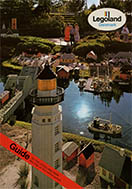
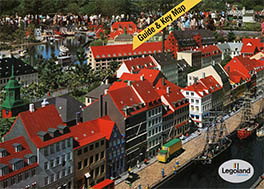
Legoland Guides, 1981 and 1986
As the park grew over the next four decades, Miniland also grew. Larger, more realistic models were installed, such as the Copenhagen Harbor (1984) and the Billund Airport (2004).
While Miniland was being expanded and constantly rebuilt, the rest of the park was also growing. Over the years the park has opened many new rides and attractions and Legoland began to change from a Lego-based amusement park to a full-fledged theme park, albeit one for ages 3–12. Fort Legoredo became Legoredo Town in 1973. The children’s area Fabuland was opened in 1980 and became Duplo Land in 2001. Pirateland was opened in 1990, Knight's Kingdom in 1997,4 4. Which included the The Knight’s Castle, the parks single largest capital investment ever. Adventureland in 2000 and Lego City in 2003. In 2008 Legoland drew 1.6 million visitors, 40% of them from abroad, and is the third largest tourist attraction in Denmark, behind only its inspiration, the Tivoli Gardens and the venerable Dyrehavsbakken.

